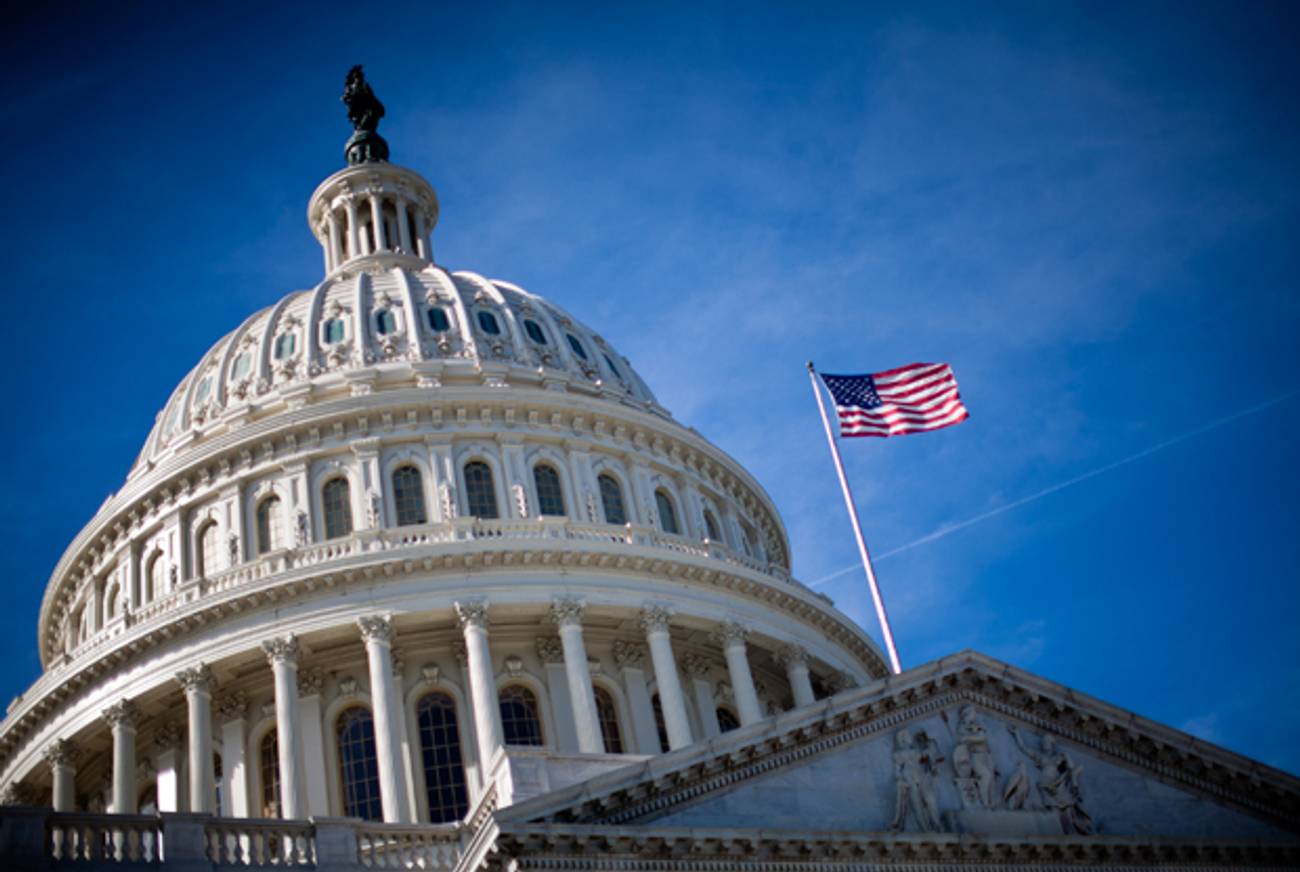The Orthodox Go to Washington
The rise of Orthodox Jews at AIPAC is an indicator of the community’s growing political involvement and influence




At the sprawling AIPAC Village, a subterranean expo spanning three city blocks beneath the Walter E. Washington Convention Center, attendees are assaulted with options. They can take a virtual tour of Israel, hobnob with congressional leaders, or watch live presentations on Israel’s Iron Dome defense system. But they can eat only one kind of food: glatt kosher. That’s because all the fare at the entire Policy Conference—from smoothies to shwarma—is under strict rabbinic supervision.
It’s one of several indicators of the rise of Orthodox Jews within AIPAC’s ranks and the lengths to which the organization has gone to make them feel at home. “It’s amazing,” said Rabbi Josh Pruzansky, New Jersey director of political affairs for the Orthodox Union. “You come to the AIPAC conference and you see thousands of Orthodox Jews as part of what is ostensibly a secular Jewish organization.”
“The official buzz is Iron Dome, but the unofficial buzz might be velvet dome,” said Rabbi Levi Shemtov, a longtime Chabad emissary in Washington, D.C. (who famously kashered the White House kitchen), referring to the velvet skullcaps worn by the numerous Chabad attendees. “You used to see maybe a couple dozen yarmulkes at the AIPAC conference. Now there are many hundreds.”
“AIPAC has been cognizant of the growing interest of many in the Orthodox community to become more politically involved in a more obvious way,” said Shemtov, “and rather than making Orthodox Jews feel accommodated, they make them feel welcome, which is something other [Jewish] organizations have not yet invested in.” (AIPAC’s competitor, J Street, failed to provide kosher options at its national conference in 2011.)
This year, for the first time, in addition to events for Conservative and Reform rabbis, the conference had several sessions for Orthodox ones, including a Monday panel discussion with California Rep. Ed Royce and New York Rep. Eliot Engel, and a Sunday address from British Chief Rabbi Jonathan Sacks.
Sacks himself was impressed by the Orthodox turnout. “I think the Modern Orthodox community is solidly supportive of Israel,” he told me, “and I think increasing numbers of Orthodox Jews at AIPAC actually reflects their increasing prominence in all aspects of the American Jewish community.”
Rabbi Judah Isaacs, director of community engagement at the Orthodox Union, concurred. “It’s like the Federation movement. The GA used to be on Shabbat with microphones and everything else, and now it’s been transformed,” he said, dubbing AIPAC “a natural partner” for many in the Modern Orthodox community. “When you talk about people in the seats who are committed to Israel, they’re in Orthodox congregations right now. For AIPAC, it makes sense in the framework of what they’re doing.”
The conference first went full-kosher under Orthodox AIPAC President Howard Friedman, though kosher options predated his tenure. But the recent explosion in Orthodox participation can be attributed in large part to the efforts of one man: Orthodox Union Executive Vice President Steven Weil. Since taking on his role at the OU, Weil has cemented ties between America’s largest Orthodox organization and its largest pro-Israel lobby group.
“Today we have 70 of our shuls who have the OU-AIPAC initiative,” he told me with pride, “which involves serious pro-Israel activism; participating in policy conferences; setting up a PAC—not affiliated with the synagogue because it’s a 501c3, but with members of the synagogue; [and] bringing in their congressional leaders—people in their area who may not have large Jewish constituencies.”
Under Weil’s stewardship, the AIPAC Shabbaton that precedes the conference has grown to over 350 people. This year, it was jam-packed with longtime activists, school groups, and Jewish professionals, all praying out of Artscroll prayerbooks stamped with “Property of the AIPAC Synagogue Initiative” stickers. (And while the AIPAC Synagogue Initiative, founded in 2007, is a well-known part of the lobby’s outreach, now encompassing hundreds of synagogues across the denominations, lesser known is that Weil’s own Beth Jacob Congregation of Beverly Hills served as the model for the entire program.)
Burgeoning Orthodox involvement at AIPAC is not a fluke. It is part of a broader trend of engagement in the political process by the community. From the Republican National Convention to nationwide battles over school choice and tuition support, Orthodox Jews are becoming increasingly prominent. “The Orthodox community has really evolved into a political force around the country,” said the OU’s Pruzansky, who works to harness that power in New Jersey.
“There are Orthodox groups all over the country that are setting up PACS—not as part of the shul, but as individuals—and that are reaching out to congressmen and senators from both parties,” adds Weil. “OU shuls are basically engaging their populations in two types of political activism: on a state house level in terms of tuition affordability, and on a national level in terms of the American-Israel relationship where they’re partnering with AIPAC.”
And the trend of Orthodox political activism shows no sign of abating. When Weil started the AIPAC-OU synagogue partnership, it kicked off with just five participating member synagogues. Three years later, there are 70. “For Orthodox rabbis, it’s becoming that kind of thing—this is the place to be,” said Isaacs.
***
Like this article? Sign up for our Daily Digest to get Tablet Magazine’s new content in your inbox each morning.
Yair Rosenberg is a senior writer at Tablet. Subscribe to his newsletter, and follow him on Twitter and Facebook.
Yair Rosenberg is a senior writer at Tablet. Subscribe to his newsletter, listen to his music, and follow him on Twitter and Facebook.